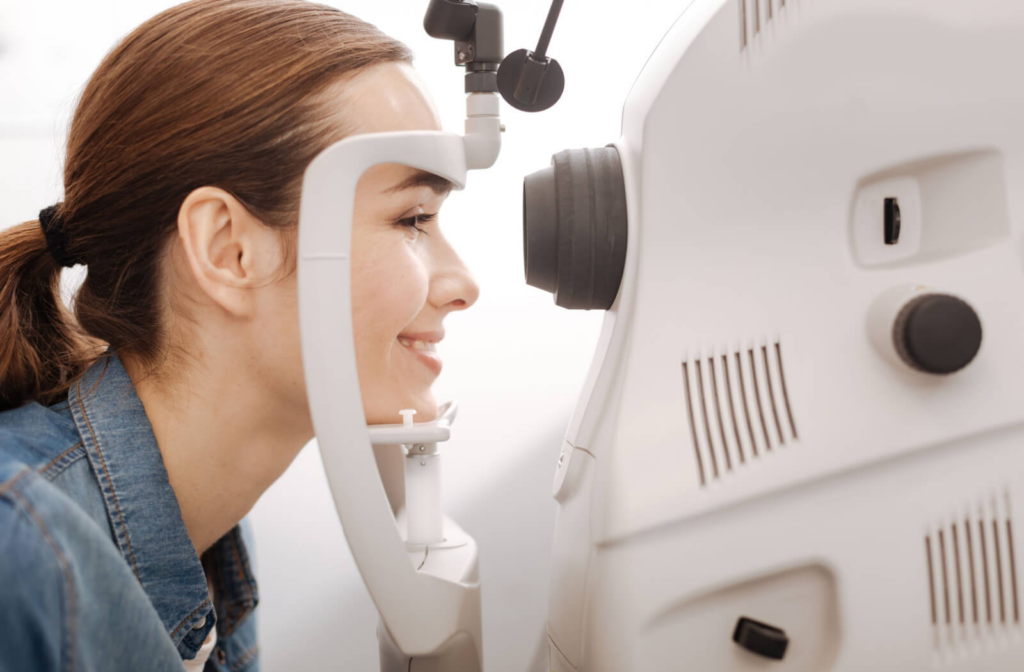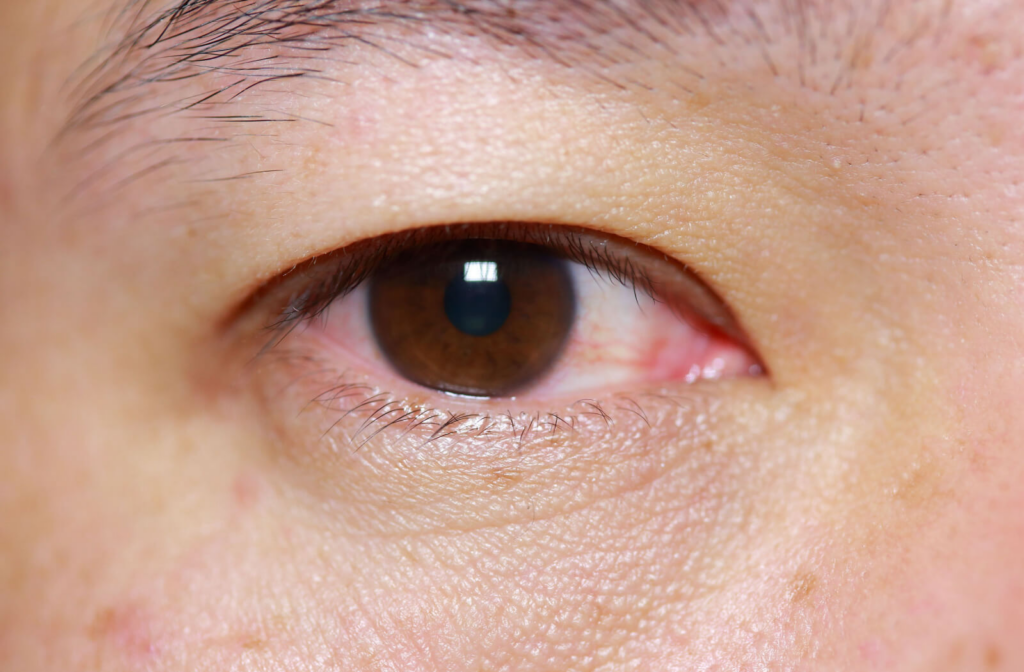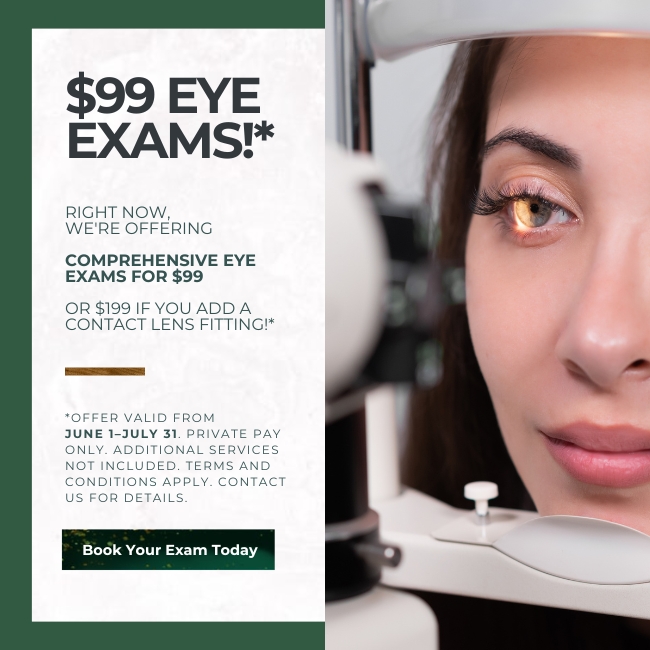Pink eye is a common infection that often clears up over time, but the duration of pink eye depends on the type of conjunctivitis you have. Viral conjunctivitis can last 7 to 14 days without treatment, bacterial conjunctivitis can clear up in 2 to 5 days with proper treatment, and allergic conjunctivitis can last as long as the allergen is present.
Learning about the causes, types, treatment options, and prevention strategies for pink eye can help you know when to seek care from your optometrist—for pink eye and other eye diseases.
What Is Pink Eye?
Pink eye, medically known as conjunctivitis, is a common eye infection that occurs when your conjunctiva (the thin, clear layer that covers the white part of your eye) is inflamed, either due to an infection or an allergic reaction.
While the symptoms of pink eye may be uncomfortable and even alarming, the good news is that this condition can clear up in a few days.
What Are the Different Types of Pink Eye?
Various factors, such as allergies, bacteria, viruses, or chemicals, can cause pink eye. Understanding the different types of pink eye is important, as it can help you and your doctor determine the best treatment.
Bacterial conjunctivitis
Bacterial conjunctivitis is caused by bacteria and is characterized by sticky eye discharge, which may be green, yellow, or white. This type of conjunctivitis is highly contagious and can spread through direct and indirect contact with an infected person.
Mild cases of bacterial conjunctivitis may disappear without antibiotic treatment in 2 to 5 days. However, it can take up to 2 weeks to fully heal. In severe cases, doctors may prescribe antibiotic eye drops or ointment to fight off the bacteria.
Viral Conjunctivitis
Viral conjunctivitis is highly contagious. It is characterized by a watery discharge, redness of the eye, and noticeable swelling of the conjunctiva.
This type of conjunctivitis usually clears up within 7 to 14 days without treatment but can take up to 3 weeks or longer to heal.
In most cases, the virus responsible is adenovirus, and the symptoms can sometimes be accompanied by flu-like symptoms such as a sore throat, runny nose, or fever.
There is no specific treatment, but symptoms can be managed through the use of antiviral medications, fever reducers, or painkillers. When you speak with us, we can provide more guidance on how to treat and recover from viral conjunctivitis.
Allergic Conjunctivitis
Allergic conjunctivitis is caused by allergens such as pollen, dust, pet dander, or contact lenses. It is characterized by itching, tearing, and swelling of the conjunctiva.
Removing the allergen from an affected person’s environment often helps with relieving the symptoms of allergic conjunctivitis. Antihistamines, decongestants, or steroid eye drops may also help reduce symptoms.
Most cases of allergic conjunctivitis last as long as the allergen is present in the environment.

Treatment Options for Pink Eye
The treatment options for pink eye vary depending on the underlying cause.
- If the cause is bacterial, antibiotics in the form of eye drops or ointments may be prescribed to help clear the infection.
- If the cause is viral, no specific treatment is needed, as the infection will usually clear up naturally within one to three weeks. However, it is still important to speak with your eye doctor about how to care for your eyes and overall health during that time.
Antiviral eye drops may sometimes be prescribed to help prevent complications. If the cause is allergic, over-the-counter eye drops or oral antihistamines may help relieve symptoms.
It’s best to speak with your eye care team to determine the right treatment for your needs.
Pink Eye Prevention
Prevention can be as good as a cure, and pink eye is no exception. Taking the following steps can go a long way toward preventing the spread of pink eye:
- Wash your hands regularly,
- Avoid eye rubbing,
- Avoid sharing personal items like towels or eye makeup.
Get Treatment for Pink Eye at Pacific Pier Optometry
If you experience any symptoms of pink eye, it is important to see a qualified optometrist for proper diagnosis and treatment. At Pacific Pier Optometry, our team provides comprehensive eye care with modern technology and an attentive approach.
Book an appointment today and let us care for your vision health.



